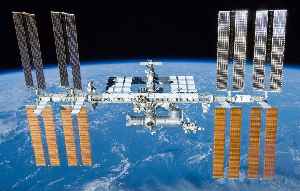Joint Indo-US space mission Nisar set for March launch
 Friday, 1 December 2023
Friday, 1 December 2023
Nasa administrator Bill Nelson announced the provisionally slated launch of Nisar, a major joint Indo-US space mission in March. The mission's primary role is to study Earth's changing ecosystems and support various applications. Nelson praised India's success with the Chandrayaan-3 mission and highlighted the strong collaboration between the US and India in the space sector. He also mentioned future plans of training an Indian astronaut for the International Space Station and the upcoming Artemis-3 mission to land the first woman astronaut on the Moon's South Pole region.
|
|||||||||
|
|
|||||||||
|
|||||||||
You Might Like💡 newsR Knowledge: Other News Mentions
|
|||||||||
![OSIRIS-REx Departure: Farewell to Asteroid Bennu [Video]](https://video.newsserve.net/300/v/20231229/1703870678-OSIRIS-REx-Departure-Farewell-to-Asteroid-Bennu.jpg)
OSIRIS-REx Departure: Farewell to Asteroid Bennu
Credit: Rumble Duration: 48:50Published
|
![2023 in review: ESA's JUICE mission to SpaceX's Starship launches, another landmark year for space [Video]](https://video.newsserve.net/300/v/20231228/1362804761-2023-in-review-ESA-JUICE-mission-to.jpg)
2023 in review: ESA's JUICE mission to SpaceX's Starship launches, another landmark year for space
Credit: euronews (in English) Duration: 02:52Published
|
![NASA, Axiom Space Reveal Artemis III Moon Mission Spacesuit Prototype (Official Broadcast) [Video]](https://video.newsserve.net/300/v/20231222/1703274391-NASA-Axiom-Space-Reveal-Artemis-III-Moon-Mission.jpg)
NASA, Axiom Space Reveal Artemis III Moon Mission Spacesuit Prototype (Official Broadcast)
Credit: Rumble Duration: 39:15Published
|
Related news from verified sources
First astronaut on Moon by...: ISRO chief Somanath sheds light on space plans post Chandrayaan-3 missionThe Bengaluru-based space agency is currently working on the country's maiden manned mission, 'Gaganyaan', which aims to send astronauts into Low Earth Orbit and...DNA |
The feline frontier: Nasa sends cat video from deep spaceThe 15-second meow-vie featuring an orange tabby named Taters is the first to be streamed from deep space, and demonstrates it's possible to transmit the...IndiaTimes |
Chandrayaan-3 Propulsion Module moved from Lunar orbit to Earth's orbitThe Indian Space Research Organization (ISRO) conducted a unique experiment by moving the Propulsion Module (PM) of Chandrayaan-3 from an orbit around the Moon...IndiaTimes |



![SpaceX rescue mission to bring stranded astronauts back to Earth docks at ISS [Video]](https://video.newsserve.net/300/v/20240930/1388899152-SpaceX-rescue-mission-to-bring-stranded-astronauts-back.jpg)
![NASA's largest-ever planetary spacecraft is due to launch next month [Video]](https://video.newsserve.net/300/v/20240926/1388554564-NASA-largest-ever-planetary-spacecraft-is-due.jpg)
![NASA preparing mission to bring stranded Boeing Starliner astronauts back to Earth from ISS [Video]](https://video.newsserve.net/300/v/20240925/1388452794-NASA-preparing-mission-to-bring-stranded-Boeing-Starliner.jpg)

![SpaceX launches rescue mission to bring stranded astronauts back from ISS [Video]](https://video.newsserve.net/300/v/20240929/1388799812-SpaceX-launches-rescue-mission-to-bring-stranded-astronauts.jpg)

![Moon's surface reproduced in Europe to prepare for future missions [Video]](https://video.newsserve.net/300/v/20240925/1388502302-Moon-surface-reproduced-in-Europe-to-prepare.jpg)